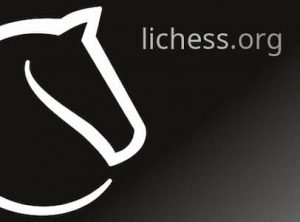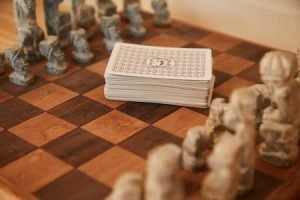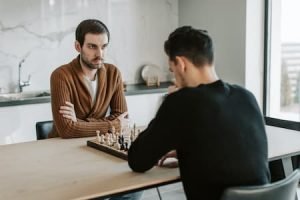Key Facts
Solving tactics is like working out in the gym. For playing your best game you need to be in the best possible shape.
Tactics are one of the essentials to be in the best shape possible. To win a game one must be alert tactically.
Also not to be mistaken, defense is also done tactically. There are a lot of positions that are saved with pure tactics.
Let me show you how to improve chess tactics.

Good books on tactics
There are a lot of books that cover all the tactical patterns. It is important to have knowledge of the tactical patterns which occur on the chessboard. Also just knowing the tactical patterns won’t help, you will also need a habit of solving tactics every day. There are a lot of books available on tactics, the following is my suggestion of books.
- The Woodpecker Method by Axel Smith and Hans Tikkens
- The Chess course by Praful Zaveri
- Winning Chess Tactics by Yasser Seirawan

Solving around 50-60(minimum) puzzles every day
Solving puzzles makes a player get used to spotting the tactics quickly. This turns out to be handy when playing with time pressure. If you want to improve the speed you can practice solving tactics by setting up a time limit i.e. to solve 50 tactics in 20 minutes or so. Also, 50-60 puzzles is a decent amount of puzzles. This enhances your pattern recognition and also improves your visualization.
Initially, you might feel that it’s easy to do 50-60 puzzles, then in that case you should increase the number of puzzles. Also, make sure you focus on accuracy. Keeping a track of accuracy is extremely beneficial as it gives you a direction on whether to keep going or to hold back and analyze.
The day when you will be extremely busy and you feel it’s difficult to see chess, on that day you can solve a bare minimum of 20 puzzles. This is just to maintain consistency.

Solving tactics on chess.com
Chesscom has come up with excellent features like puzzle rush. It includes a time limit of 3 minutes, 5 minutes, and a survival mode wherein all the modes if you make 3 mistakes your streak ends. To warm up in the morning, you can use the 3 minutes or 5 minutes feature as it will boost your neurons and make your brain active again.
The survival mode can be used during the hardcore training where you solve puzzles by setting them up on the board (maybe puzzles after 20 will require a chess set). Try to keep a note of what score you achieve on survival mode every day and compare your results at the end of the week. This conscious effort will help you get better at tactics in around 2-3months!

Solving tactics on Lichess
Once you observe that there are a few flaws in a specific pattern of tactics, then you can use the LiChess puzzles feature to work on it. Lichess has brought an amazing feature where they have separated puzzles pattern-wise!
The website also has a puzzle dashboard where you can find which pattern are you lacking in and then you can work on it accordingly. Also, there are 5 difficulty levels, viz. Easiest, Easier, Normal, Harder, Hardest. These levels are can be altered according to your strength.
Let’s say you are having some difficulties in solving puzzles related to mate in 3. In that case, you can improve it by going to the puzzles section of Lichess and scroll to mate in 3. Then solve puzzles with the easiest level. Once you get 10 correct answers in a row increase the difficulty level. This process will surely improve your tactical solving problems.

Studying classical games from the 20th century
Chess is a game where the knowledge from the past games is improvised and used. So all the mistakes which were made by players in the past are figured out and improved to continue the position.
If you notice, in the previous century there used to be a lot of games which used to end in less than 25-30 moves. The reason is that the players were not tactically strong. The top players from that time used to dominate others using their tactical province.
The golden games also can help in realizing why people play specific moves and openings. This can be considered as an added benefit apart from learning tactics.

Playing games with opposite side castling
Opposite side castling is done in order to sharpen the play. This often leads to positions where the one who gets the attack rolling first wins the game. This attack is totally based on tactical vision. Try looking for tactics in the following positions
If you notice the winning moves are not that easy to spot. But once you know the pattern, it comes to you naturally. In this way you can practically learn to apply tactics.

Playing gambit lines in training games
Gambit lines should not be played regularly, but those are truly useful when it comes to improving tactics. Let’s say gambits like Smirnov gambit, Danish Gambit, Budapest Gambit, Albin counter gambit, etc. are very useful. These gambits will force you to look for tactics. First, you can decide on which gambit to play.
Then you can choose a few players who are experts of those lines and follow them. Their handling of positions helps you to improve your understanding of the gambits. Where does the compensation lie? How can we create an attack? Once you get answers to these questions you automatically improve your tactical vision